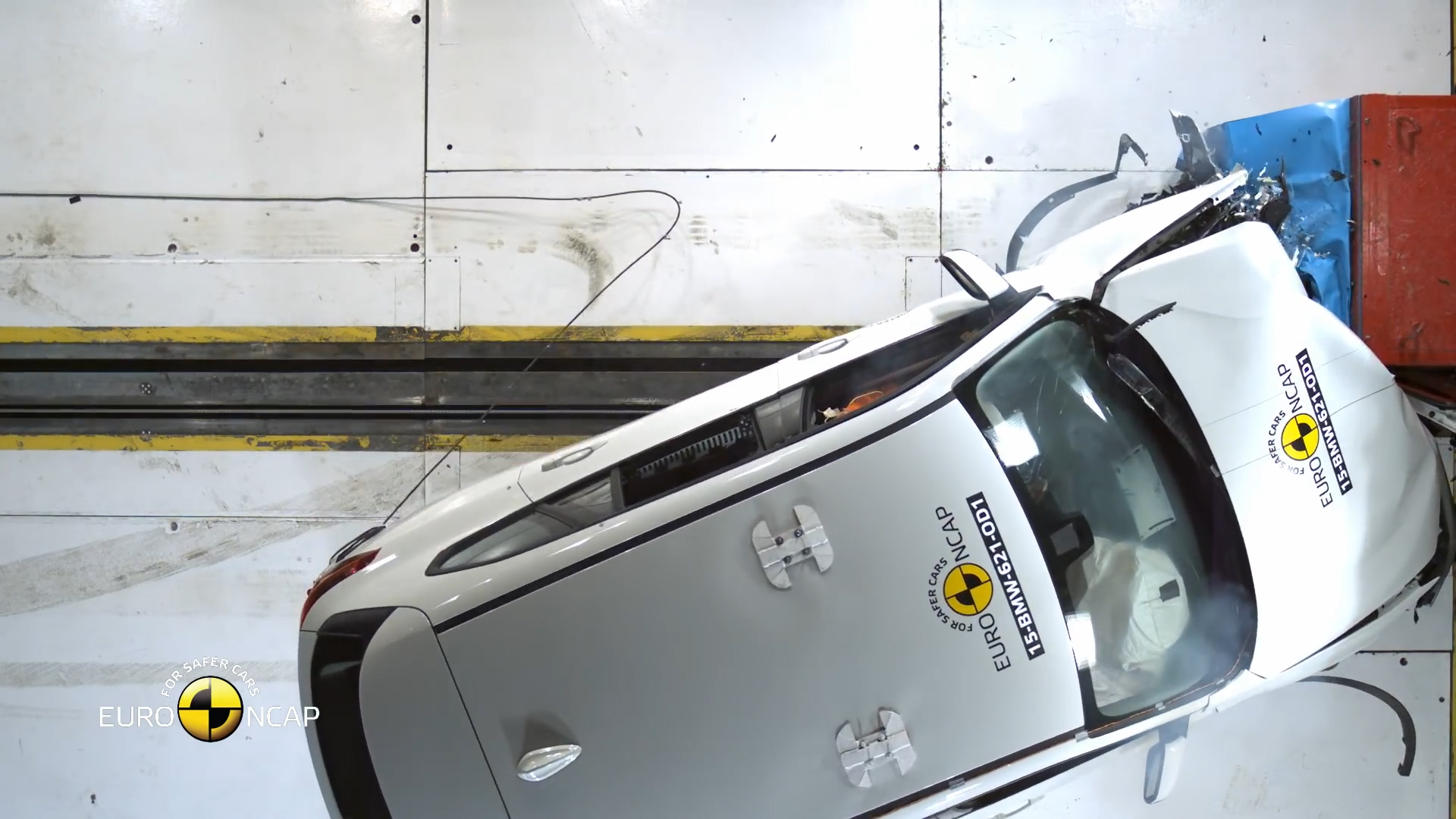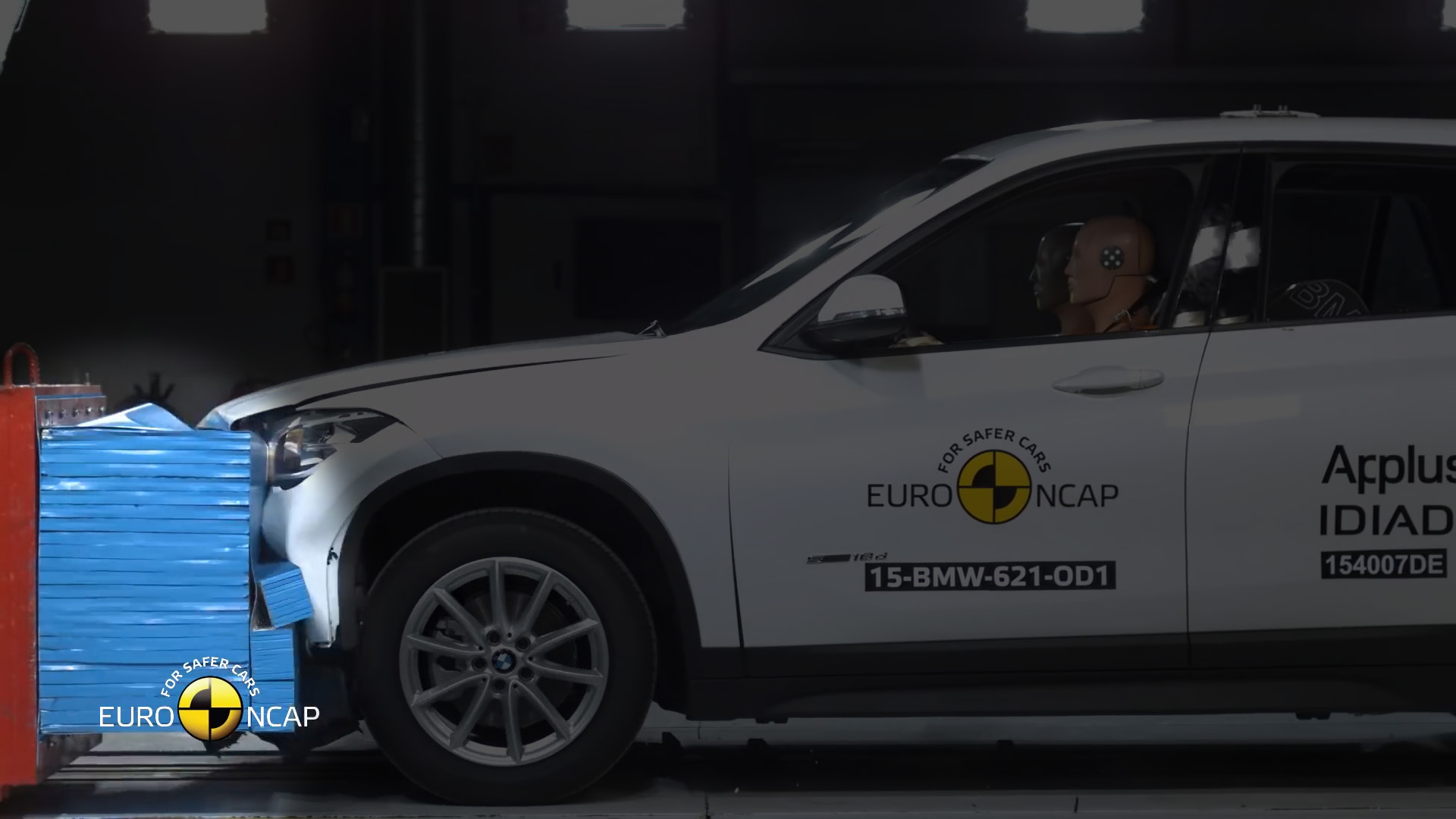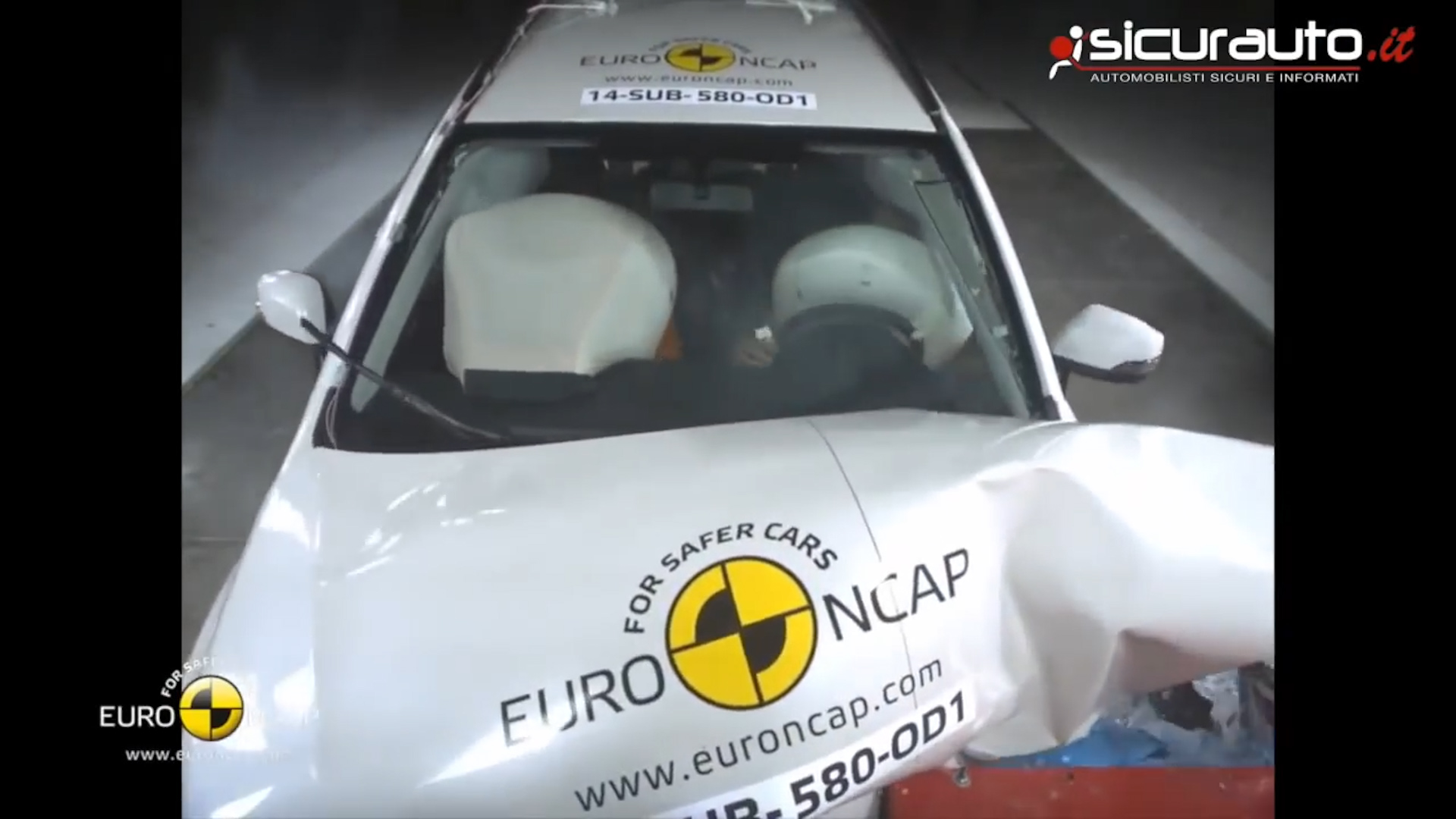Crash Test for Dummies
POP QUIZ:
You drive your car into a concrete wall at 64 km/h. Which of these statements is more correct?
The impact is the same as two identical cars having a head-on crash, each driving at 32 km/h
The impact is the same as two identical cars having a head-on crash, each driving at 64 km/h
If you answered '1', you really need to watch this report...
VIDEO TRANSCRIPT
64 plus 64 equals … 64. Here’s why.
Say hi to the ANCAP offset frontal crash-test.
This impact happens at 64 km/h. It simulates, in controlled conditions, a life-threatening clipping head-on crash where only 40 per cent of the cars overlap. This happens in the real world when one car strays over the centre line and the other driver doesn’t react in time. The 40 per cent overlap concentrates the load, and introduces rotational effects as well.
It’s a severe impact. It’s hard to pass this test. We’re going to find out how well you understand crash test basics in this report.
See also: The mad science of crash survival >>
THE MUSTANG
As you might know, I recently reported on the Mustang - a gorgeous muscle car that was independently assessed as a safety shitbox by Euro NCAP, under new safety rating protocols.
For a reporter like me, this kind of finding is a gift. It’s like surfing. A wave breaks … and all you need to do is ride it home. Some people, understandably perhaps, did not like the facts, and they certainly didn’t like the way I presented them. Quite OK. I’m just glad that there’s no Sharia law for apostates of the muscle car religion. One commenter did actually call for: “the worst possible jihad anal violation” to be bestowed upon me.
THE MISCONCEPTION
Plenty of somewhat more moderate people commented, too. They didn’t want me dead, so much, but they worried me, too. Many offered words to the effect that crash tests are too soft and/or too irrelevant. A common, worrying theme, was that hitting a barrier at 64 is - effectively - the same thing as having an actual head-on (out there, on the road) between two cars, each doing 32 km/h. Because, I dunno - 32 plus 32 equals 64.
This is of course, breathtakingly uninformed bullshit, as anyone who paid attention at school should know. I mean, I can see, superficially, that 32 plus 32 equals 64, so you could build a hypothetical argument around that. But it’s still bullshit, and I’ve got a jihad operating against that - because humanity doesn’t need more bullshit, nor more idiots polluting the gene pool and getting in the way of human advancement.
I understand the absurdly flawed, but logical, argument that the closing speed is 64 when two cars crash and they’re each going 32. I do. But the western world has been studying physics for hundreds of years. We already know beyond any doubt that crashes aren’t about closing speed. They’re about energy. Specifically, they’re about the conversion of kinetic energy into mechanical work. Closing speed need not apply in this analysis.
See also: The real zombie apocalypse >>
PHYSICS FOR DUMMIES
Sir Isaac Newton - the greatest scientific genius ever. Brainier even than Einstein, just. He’s responsible for the understanding of basically all kinematics - stuff that moves. And he is, like, rolling in his grave if you think 32 plus 32 equals 64 at Crashlab. He’s going: ‘It’s been 350 years, and they still don’t get it’.
When cars hit cars - 64 plus 64 equals 64. Let’s assume they’re all identical cars for the sake of this discussion, and not get muddied by geometric and mass mis-matches. There’s a scientific best-seller you should read called the first law of thermodynamics. That got figured out about 130 years after Newton croaked. It’s kind of important, because it’s observed to operate everywhere in the known universe. It applies beautifully to crashing cars.
Nothing breaks the first law, because that’s impossible.
FIRST LAW
The first law says that the sum of work and energy in a closed system, is constant in the time domain. Unfamiliar combination of words perhaps, but a very simple concept. Stay with me here - because this is as complicated as it gets.
Basically, it says, if you get a hypothetical box that work and energy can’t pass through, and you put that box around some system or event, the total amount work and energy inside the box does not change over time. Work can become energy inside the box, and vice versa. But the total does not change.
So let’s apply that to a crash test - and put the box around that.
WHAT HAPPENS DURING A CRASH
Just before the crash, the car is doing 64 km/h. It has a fixed amount of kinetic energy - about 240kJ if it weighs about 1500 kilos. The kinetic energy depends only on the mass and the speed of the car.
Just after the crash, it’s got no kinetic energy - because it’s stopped. Basically, all the kinetic energy goes into mechanical work - bending the metal. So, energy turns into mechanical work during the crash. Isaac Newton and Rudolf Clausius (The thermodynamics luminary): both pretty happy here.
When you see a crash test, you’re looking at 240kJ of kinetic energy becoming 240kJ of mechanical work. Bent metal. So even a complete moron, like a politician, can see that the structure absorbs the energy. That’s what it’s designed to do.
Same thing happens if you hit a big tree or a rock wall - or anything that does not yield in a crash, like an aircraft carrier. Or the moon. Unyielding objects don’t participate in collisions in any materially significant way - they merely reflect all the energy back into the thing doing the crashing.
THE BLUE FACE
Forget about the crushable blue face on the barrier, too - I’ll get to that in another report. Suffice to say that the blue face - which is a standardised, precise aluminium honeycomb structure - is there to make the test harder for manufacturers to cheat and makes the test more relevant to the real world. The crash is still overwhelmingly ‘car hits concrete at 64 kays’. And, by regulation, the concrete block has to weigh at least 70 metric tonnes. It does not yield.
So: that’s in the lab. Let’s go out in the real world and - hypothetically - smash two identical cars, each doing 64, head-to-head, with a 40 per cent overlap.
REAL HEAD-ON CRASHES
Each car has about 240kJ of kinetic energy. They crash together. There’s twice as much energy, and - critically - twice as much structure to absorb it. Therefore, each structure absorbs 240kJ of energy as work, just like in the crash test. So the damage to each car, and therefore the effect on the occupants - is identical to having exactly the same crash into the barrier at Crashlab at 64.
64 plus 64 equals 64. Otherwise you break the first law of thermodynamics, and the only way you can do that is by going to a different universe. There is no difference between a crash-test and a head-on at the same speed. The head-on has twice as much energy absorbing structure, twice as much total energy, and twice as much bent metal afterwards.
64 into the barrier in the lab equals 64 plus 64 head-on, in the real world. If the cars are identical.
SCIENCE -V- OPINION
Isaac Newton, Rudolf Clausius: very happy here, because kinematics is OK and we’re not violating the first law of thermodynamics, and you’ve just seen Newton’s third law in play, too (the easiest one, about action and reaction being equal and opposite).
Einstein is dead but happy, too - relativity, all good. Crash looking good across all frames of reference. Just remember: I’m conscripting these braniacs into this argument to negate your opinion, if you disageee. This is not my opinion on crashing. This is a set of indisputable, ironclad, scientifically robust facts. You don’t get to have an opinion on this, unless you can prove it.
But perhaps my attitude sucks and you’d like to take this further … speak to a supervisor, or something. You’re going to be taking on three of the greatest scientific geniuses in human history with your apparently contrarian analysis. Good luck with that. Arguing the toss here is like believing the story of Noah’s Ark was a real historical event, or disputing evolution, or gravity. Or believing Donald Trump will make America great again. They’re all equally absurd propositions.
If you think I’m bullshitting you, ask anyone you know who studied applied physics. An engineer or a scientist. Someone qualified. Or take my word for it: A head-on collision at 32 km/h (two cars, each doing 32) is actually only one-quarter as severe as a crash test at 64 - all other things being equal. Because halving the speed cuts the energy by a quarter.
CONCLUSION
All you really need to remember is that 64 plus 64 equals 64 when you’re crash-testing cars. So, the 64 km/h ANCAP offset frontal crash test is in no way a ‘soft option’. It both relevant to the real-world and very severe.
It happens on the border of human survival in so-called ‘high-mechanism’ crashes. If the dummy survives this crash test, there’s a good chance you’ll walk away in the real world, too. It’s 30 per cent more severe than the corresponding regulatory test that all cars on sale must pass.
This is either physics for dummies or victory a small skirmish in my jihad on bullshit. Maybe both. Feel free to like or detest this video (perhaps because of my dismissive attitude to that nutbag Trump - despite it being just one per cent of this report, or evolution, or even Noah).
For more uplifting battles in the struggle against bullshit, you could always subscribe. I’d like that. We could wage war on bullshit together, perhaps. Good safety tip: do try really hard not to crash, no matter how safe the car you’re in (unless you disbelieve evolution, in which case: hard left, now).











